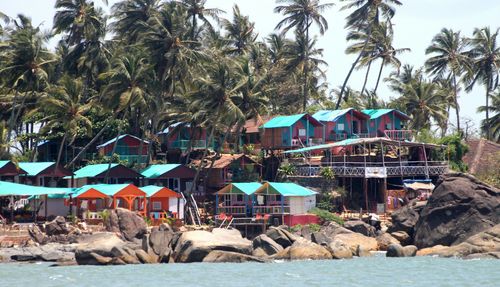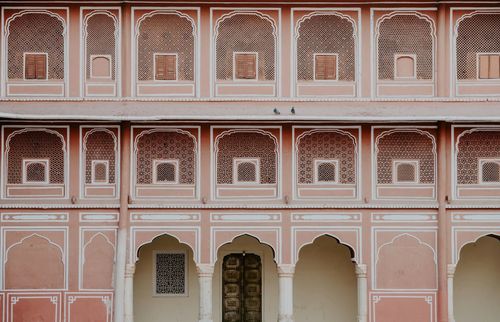This South Asia travel guide introduces you to India. It is a destination full of rich history, vibrant colors, and delicious cuisine, owing to its diverse culture. Get ready to explore the country’s top destinations, must-see attractions, cultural insights, travel tips, and more!
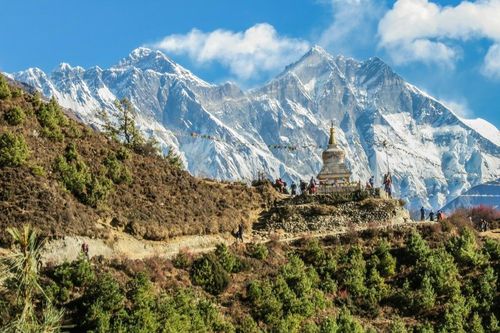
Ultimate Travel Guide to India
This South Asia travel guide introduces you to India. It is a destination full of rich history, vibrant colors, and delicious cuisine, owing to its diverse culture. From the Himalayas to the south, and cities to ancient temples, India offers a unique experience. Immerse yourself in India’s traditions, explore its monuments, also let the country’s magic awaken your senses and spirit.
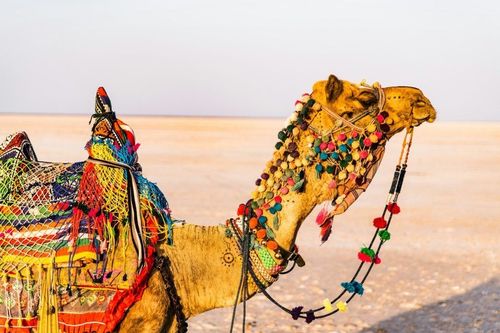
Top Destination India
Explore India’s top tourist destinations with our South Asia travel guide. Marvel at the intricate architecture, rich history, and beautiful scenery. Enhance your travel experience and discover India’s vibrant local culture and exquisite cuisine.
Delhi
Located in South Asia, Delhi is the capital of India, where ancient history and vibrant modernity blend. You can enjoy tourist destinations like the Red Fort and the Qutub Minar, which are World Heritage Sites. Besides, enjoy the Lotus Temple and the Baha’i Temple, which welcome all people and all religions.
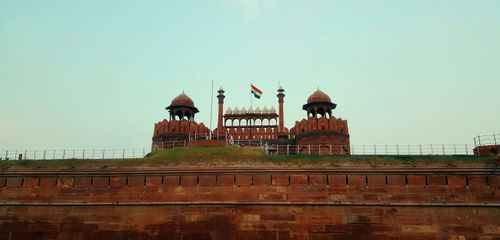
To learn about the spices and jewelry, visit Chandni Chowk Market. It is one of Delhi’s oldest and busiest markets. It is famous above all for its narrow alleys, stores, and delicious street food.
Rajasthan
The essence of Indian royalty is embodied in Rajasthan, known as the Land of Kings. Udaipur is known as the “City of Lakes.” Jaisalmer is known as the “Golden City” and the “Blue City.” Jodhpur is also beautiful. Pushkar is a spiritual destination located on a sacred lake.
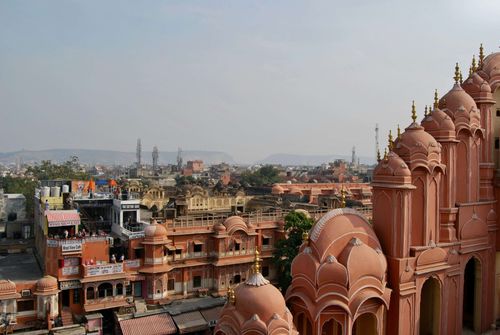
Kerala
For a tourist trip with lush landscapes, beaches, and tranquil canals, visit Kerala, known as “God’s Own Country.” It offers a rejuvenating experience. Palm-lined canals at Alleppey or Alappuzha are spectacular. Kumarakom is famous for its birds. Munnar is a hill station known for its rolling hills and beautiful nature. Enjoy the mix of cultures in Kochi, or Cochin. See beautiful sights at the Hindu pilgrimage center in Varkala.
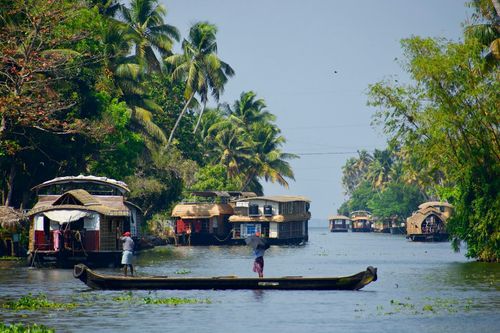
Goa
Enjoy the nightlife and culture in Goa, India’s smallest state, known for its beaches. Besides the beaches of Baga and Calangute with water sports and restaurants. Also, Panaji, the capital of Goa, has historic churches and cathedrals in Old Goa, a World Heritage Site. Equally, Palolem Beach is quiet and pretty. If you love nature and hiking, you can also enjoy the Bhagwan Mahavir National Park.
Must-See Attractions in India
Enjoy these sightseeing trips with the South Asia travel guide.
The Taj Mahal
Agra, Uttar Pradesh, is home to the Taj Mahal, one of the world’s most famous monuments. A cultural wonder with beautiful architecture and a tragic, romantic history. A World Heritage Site.
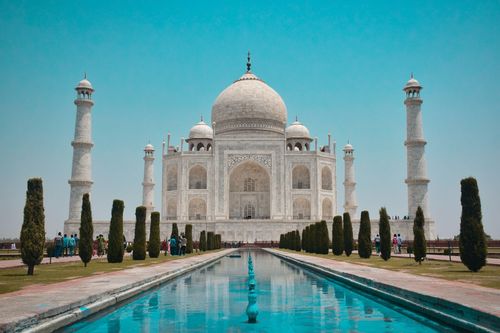
Varanasi
Varanasi is the “Sacred City of India” on the Ganges River. It is an important Hindu pilgrimage center and a key place for culture, spirituality, and religion in India. The Ganges River is the heart of Varanasi. Further, the stairs leading down to the river are used for daily rituals, prayers, and cremations.
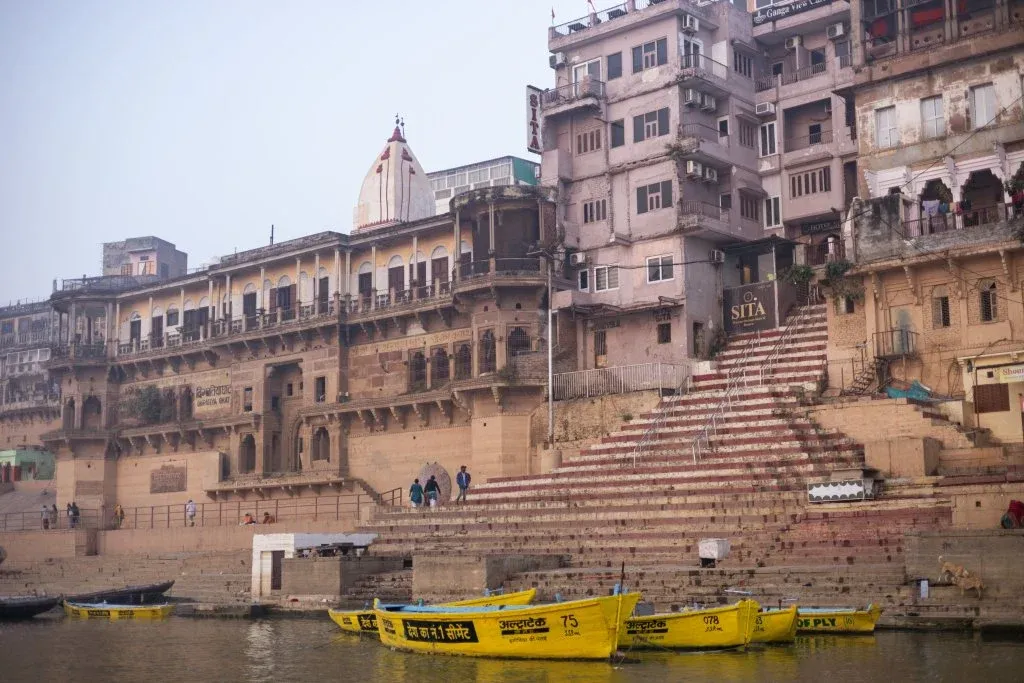
Jaipur
Jaipur is famous for its handicrafts, jewelry, and textiles. You can find a wide variety of traditional Rajasthani products at Johari Bazaar, Bapu Bazaar, and Tripolia Market. Try Rajasthani dishes like Dal Baati Churma, Gatte ki Sabzi, and Laal Maas. The city has lots of traditional sweets. Enjoy colorful festivals like Diwali, Gangaur, and Teej. Jaipur offers tourists a unique experience combining history, culture, architecture, shopping, and food.
Cultural Insights
Discover India’s vast cultural diversity and rich history with this South Asia travel guide. It offers festivals, celebrations, cuisine, and customs.
Festivals and Celebrations
This country has many festivals and celebrations that show its different cultures and religions. Besides, celebrate Diwali between October and November. It shows that good beats evil and light beats darkness.
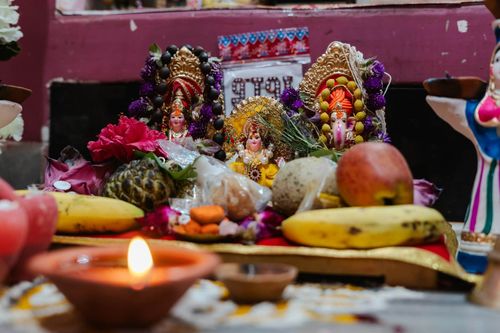
Holi is the festival of colors, which takes place in March. It is a colorful celebration marking the beginning of spring and good triumphing over evil. People throw colored powder and water at each other, dance, and eat food.
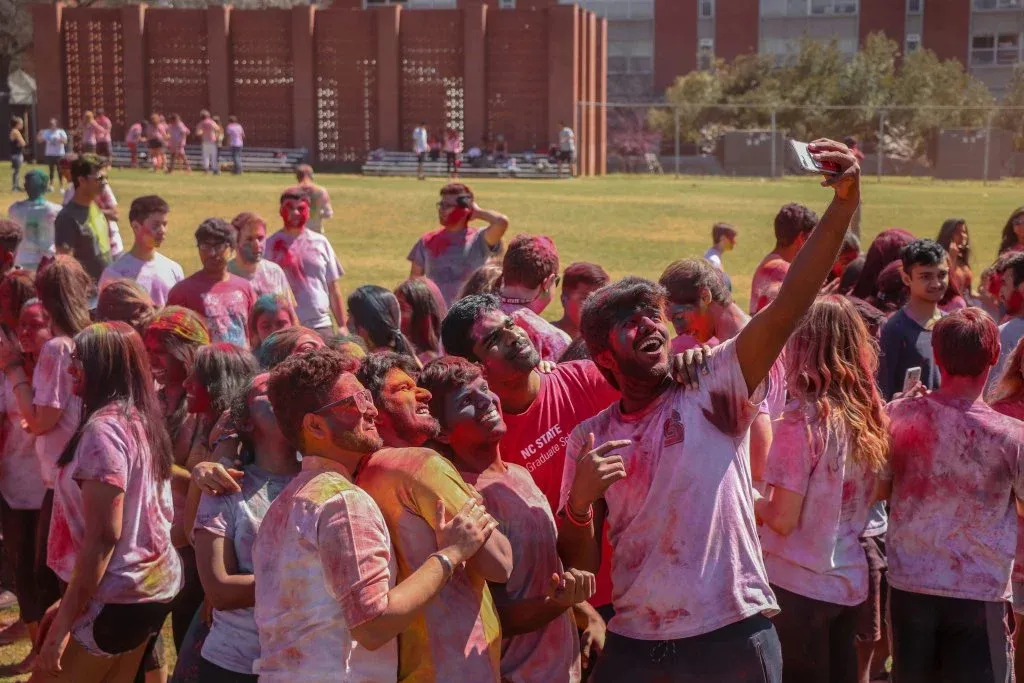
Eid-ul-Fitr marks the end of Ramadan. Festivities include communal prayers, special feasts, gift exchanges, and charity for the needy. The date of the celebration depends on the Islamic lunar calendar.
Celebrate Navratri and Durga Puja, a nine-night Hindu festival dedicated to the goddess Durga, chiefly with traditional dances and worship of elaborate statues of Durga.
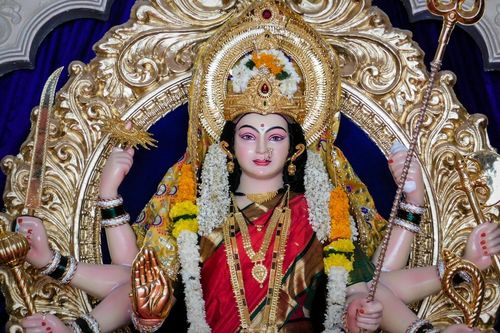
Celebrate Pongal in Tamil Nadu in January and Makar Sankranti throughout India. These festivals mark the end of winter and the beginning of the harvest season, thanks to nature and special foods.
Traditional Indian Cuisine
India has many different types of food from different regions. Each region has its style of cooking. With our South Asia travel guide, you can also taste traditional dishes like tandoori chicken, momos, and other dishes.
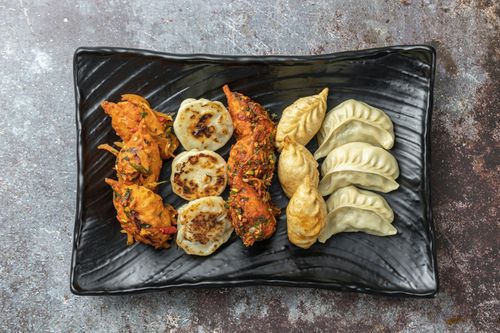
Local Customs and Etiquette
India is a culturally diverse country with a rich heritage. Customs and etiquette differ across regions and communities. The traditional greeting is to touch your palms together in front of your chest and say “Namaste.” Chiefly, you show respect and humility. It’s best to dress modestly, especially in religious sites and rural areas. Women often wear saris or salwar kameez, while men might wear kurtas.
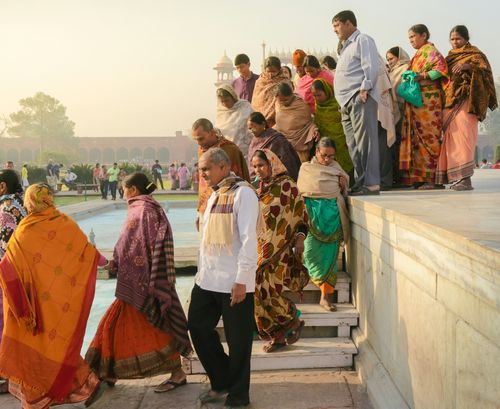
Practical Travel Tips
India is a fascinating destination for travelers. It has a vast and diverse landscape, rich history, and vibrant culture. The South Asia travel guide helps you choose the best way to get around, stay safe, and know when to go.
Transportation Options: Trains, Buses, and Flights
India has an extensive and varied network of transportation options to suit different budgets and preferences. Book rail, bus, and air transportation online through the Indian Railways website.
- Trains connect almost all parts of the country, from large cities to small villages.
- Bus service is another affordable option for travel within India, ranging from basic buses to luxury options.
- The air network has numerous international and domestic airports.
Safety Tips for Travelers
Traveling to India is an enriching experience that offers visitors an unforgettable mix of cultures, landscapes, and adventures. Properly plan and take safety precautions when varying transportation options to ensure a safe trip and stay. In our South Asia travel guide, we provide you with some safety tips to make your travel smooth:
- Keep both digital and physical copies of important documents (passport, visa, tickets, insurance).
- Divide money and credit cards in different places.
- Use authorized and prepaid transportation, especially at airports and train stations.
- Avoid traveling alone in cabs or rickshaws at night.
- Drink only bottled or purified water; avoid ice and raw food from street vendors.
- Carry basic medicines and a first aid kit.
- Get vaccinated according to India’s health recommendations.
- Dress modestly, especially at religious sites; women may wear a headscarf in temples.
- Respect local customs and avoid behavior that might be seen as disrespectful.
- Keep personal belongings secure in crowded places; use locks on luggage.
- Stay informed about your destinations and avoid unsafe areas, especially after dark.
Best Time to Visit India
The regions you plan to explore and your climatic preferences determine the best time to visit. India experiences three main seasons: winter, summer, and monsoon.
- Winter occurs from October to March. It is the peak tourist season in most regions, with a pleasant and cool climate.
- Summer lasts from April to June. This season can be extremely hot in most parts of India, especially in the northern and central regions, where temperatures can exceed 40°C.
- The monsoon season falls between July and September, bringing heavy rains to most regions, causing floods and landslides in some areas.
Stay Connected with Yoho Mobile
The eSIM offers advantages in terms of cybersecurity, allowing you to easily change the operator from the personal device settings without visiting a physical store to purchase a new SIM card. Yoho Mobile stands out as the best eSIM option for travelers looking for an easy and affordable way to stay connected and enjoy a smooth and enjoyable travel experience in “The Land of Dreams.”
🎁 Special Discount for Our Readers!
As a special treat for our readers, Yoho Mobile is offering an exclusive discount! Use our coupon code “YOHOREADERSAVE” to get your first order for FREE!
Don’t miss out on this opportunity to stay connected affordably while exploring India.
Exploring Nepal
Nepal, nestled in the heart of the Himalayas, is a land of contrasts and wonders where history, culture, and nature intertwine to offer unforgettable experiences. Every corner of this small country has something unique to offer. Discover remarkable places and adventurous activities with essential travel information from our South Asia travel guide.
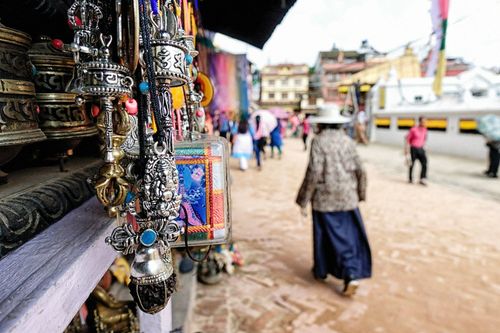
Must-See Places in Nepal
Nepal is renowned for its majestic mountains, rich cultural heritage, and natural diversity. The country’s geography includes Mount Everest, the pinnacle of the Himalayas. With the South Asia travel guide, you can experience this fascinating country by exploring some must-see places.
Kathmandu
Kathmandu, the capital and largest city, blends vibrant tradition with modernity.
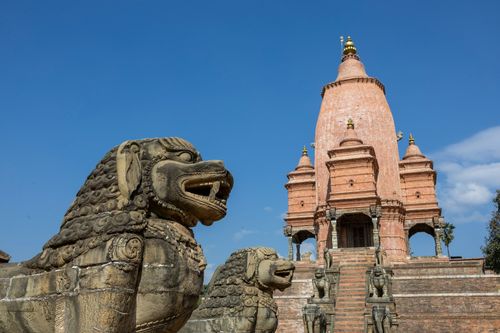
Durbar Square: A World Heritage Site featuring the Palace of Hanuman Dhoka and the Temple of Taleju.
Swayambhunath (Monkey Temple), is an ancient religious complex decorated with the “Eyes of Buddha” or “Eyes of Wisdom,” making it one of the most important and sacred sites in the country.
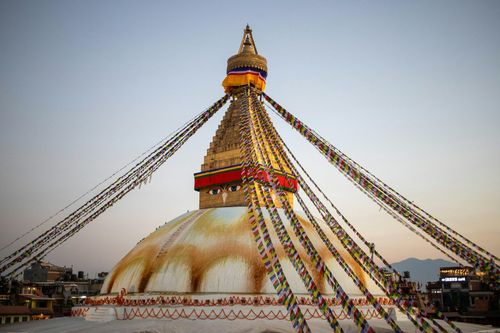
Boudhanath, another monumental and sacred stupa for Tibetan Buddhists, which was also declared a World Heritage Site.
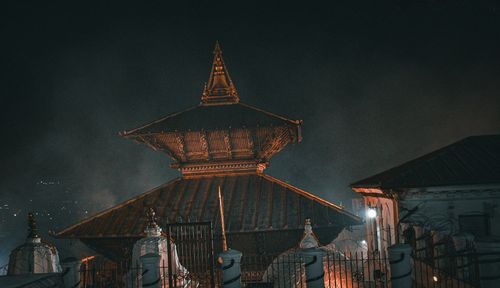
Pashupatinath, a significant Hindu temple dedicated to Shiva, is located on the banks of the Bagmati River, where funeral rituals are performed, offering a deep insight into Hindu religious traditions.
Pokhara
Pokhara, known for its picturesque scenery and relaxed atmosphere, serves as a gateway to the Annapurna Himalayas and a paradise for adventure lovers. You can enjoy views of Mount Machapuchare and other Himalayan peaks while at Phewa Lake. The World Peace Pagoda provides a breathtaking view of the Annapurna range and the city of Pokhara. Visit the impressive Devi Waterfall, which disappears into the subway cave Gupteshwor Mahadev, home to a temple dedicated to Shiva.
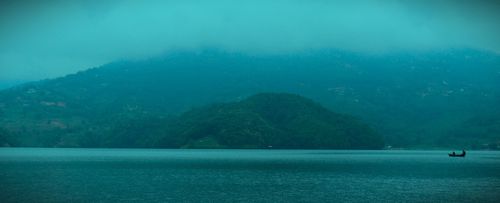
Chitwan National Park
Chitwan National Park is ideal for nature and wildlife enthusiasts. Explore the rich biodiversity of the park through Jeep Safaris. You can also visit the Tharu Villages for a cultural experience.
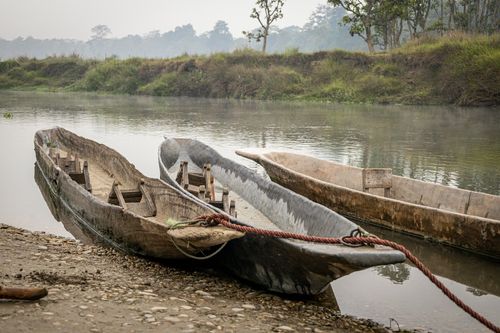
Lumbini
Lumbini, a sacred place of great historical importance, is recognized as the birthplace of Prince Siddhartha Gautama, known as Buddha, who founded Buddhism. Declared a World Heritage Site, Lumbini’s Sacred Gardens feature various temples, stupas, monasteries, and places of worship, giving it a sacred and spiritual character.
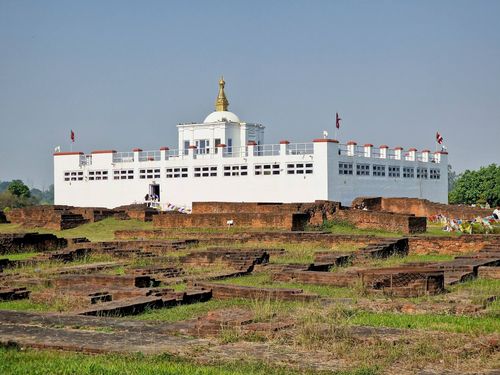
Everest Region
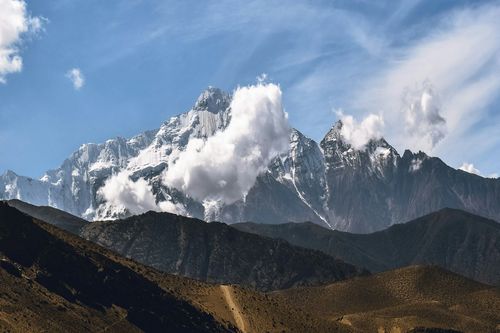
The Everest Region attracts mountaineers and trekkers from around the world. Namche Bazaar, a picturesque Sherpa village, serves as the gateway to Everest, offering spectacular views of the Himalayas. At Tengboche Monastery, you can enjoy panoramic views of Everest, Lhotse, and Ama Dablam, making it a perfect place to experience peace and spirituality. Kala Patthar Viewpoint offers one of the most impressive views of Everest, the highest peak in the world. Everest Region is a mecca for mountaineers and trekkers from all over the world. Namche Bazaar, a picturesque Sherpa village, is the gateway to Everest. You can enjoy the spectacular views of the Himalayas.
Tengboche Monastery offers panoramic views of Everest, Lhotse, and Ama Dablam. Excellent place to enjoy the peace and spirituality of the environment. Kala Patthar Viewpoint offers one of the most impressive views of Everest, the highest peak in the world.
Annapurna Region
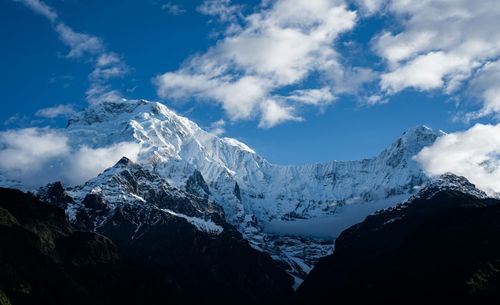
Some of the best trekking in the world is offered by the Annapurna Region, where varied and accessible landscapes are enjoyed. Spectacular sunrises and panoramic views of the snow-capped Himalayan peaks of Dhaulagiri and Annapurna are enjoyed from the Poon Hill viewpoint, along with other breathtaking views and unforgettable experiences.
Bhaktapur
Kathmandu Valley, the ancient city of Bhaktapur is famous for its well-preserved medieval architecture and rich cultural heritage, declared a World Heritage Site.
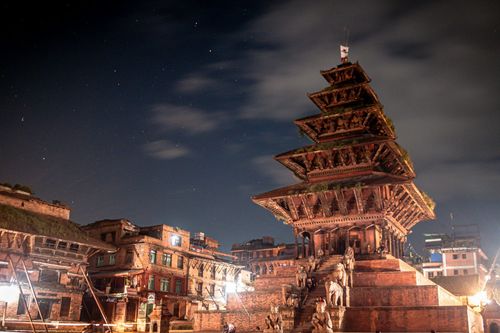
The impressive architecture in the Nyatapola Temple, dedicated to the goddess Siddhi Lakshmi, and the Bhairabnath Temple, dedicated to the deity Bhairava, can be appreciated along with the statue of King Bhupatindra Malla. A collection of traditional and contemporary art of the country is displayed at the National Art Museum of Nepal.
The wood-carved buildings and architectural structures decorated with intricate designs contribute to the beauty and uniqueness of the city’s architectural heritage. Taumadhi Square offers a taste of the city’s rich history and culture.
Adventure Activities in Nepal
Nepal with the diversity of landscapes and rushing rivers, offers some of the most thrilling adventure experiences in the world. Among the many thrilling activities, paragliding in Pokhara and whitewater rafting stand out as must-do experiences that allow adventurers to connect with nature and the beauty of this amazing country. Learn more with our South Asia travel guide.
Paragliding in Pokhara and white-water rafting
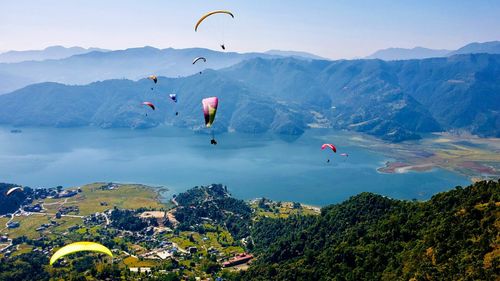
Paragliding in Pokhara offers an unforgettable experience with spectacular views of the Himalayas and Phewa Lake. You can take off from Sarangkot, the most popular paragliding point in Pokhara. Most paragliding flights in Pokhara are tandem flights, where you fly with an experienced pilot. The best time for paragliding is from September to November and March to May when wind conditions are optimal and the weather is favorable.
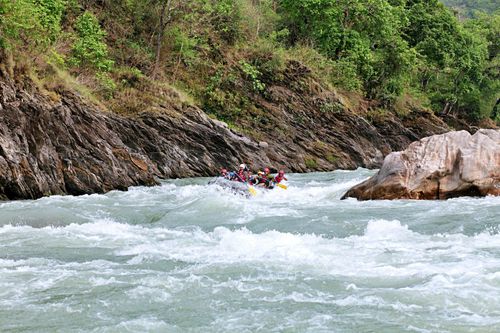
The Himalayas’ glacier-fed rivers create one of the best white water rafting destinations in the world, offering experiences from gentle to extremely challenging. Popular rivers for rafting include the Trisuli, Seti, Bhote Koshi, Dhudh Kosi, and Karnali rivers. You can choose from half-day excursions to multi-day expeditions. The best time for rafting is from September to December and March to June.
Essential Travel Information
Nepal, a fascinating destination with majestic scenery, rich culture, and warm hospitality, awaits you. Our South Asia travel guide provides practical advice on navigating Nepal.
Practical tips to navigate around Nepal
- Obtain a visa on arrival at Kathmandu’s Tribhuvan International Airport or various land entry points if you’re a citizen of most countries.
- Ensure your travel insurance covers: Medical and hospitalization expenses. Emergency medical evacuation, especially for trekking in remote areas.
- Consider international companies like World Nomads, Allianz, and Axa for travel insurance.
- Read the policies carefully before purchasing to ensure complete coverage.
You can use public transportation, including local buses, minibusses, minivans, taxis, and rickshaws, in the cities. Be sure to negotiate the fare before boarding taxis. You can rent motorcycles, scooters, or cars in Kathmandu and Pokhara, but be aware that road conditions can be challenging. Domestic flights connect Kathmandu with destinations like Pokhara, Lukla, Jomsom, and other major cities. Book in advance, especially in high season.
Affordable Accommodations
In Kathmandu, the Thamel neighborhood offers a wide range of accommodations, from budget hostels to luxury hotels. In Pokhara, Lakeside is the preferred area for tourists, with similar accommodation options. Trekking routes such as Annapurna and Everest have teahouses or lodges. Other options include youth hostels and guesthouses. In rural areas, homestays offer an authentic experience and the opportunity to interact with local families.
Food and Overhead Costs
You can enjoy meals in basic local restaurants, with typical dishes like dal bhat, momos, and thukpa. International food is also available. General expenses include transportation and entrance fees to tourist sites such as Chitwan National Park or Durbar Square in Kathmandu.
Stay Connected with Yoho Mobile
When visiting Nepal, travelers can benefit from efficient connectivity provided by eSIMs. You can easily switch carriers from your device settings without visiting a physical store to purchase a new SIM card. The eSIM allows you to have multiple operator profiles on a single device, offering advantages in terms of cybersecurity. Yoho Mobile is an ideal choice for travelers to enjoy a pleasant experience in South Asia, exploring the “Roof of the World” and enjoying everything from natural wonders to rich cultural heritage.
| 🎁 Special Discount for Our Readers! | ||
| As a special treat for our readers, Yoho Mobile is offering an exclusive discount! Use our coupon code “YOHOREADERSAVE” to get your first order for FREE! | ||
| Don’t miss out on this opportunity to stay connected affordably while exploring Nepal. |
Bhutan Travel Guide
Bhutan, a landlocked country in South Asia, is more than just a tourist spot; it’s a place that inspires reflection on happiness, nature, and community. Known as the “Kingdom of Happiness,” Bhutan prioritizes the well-being of its people. With our South Asia travel guide, you can explore its breathtaking landscapes, rich culture, and a strong focus on sustainability—perfect for disconnecting from daily life and reconnecting with what truly matters. Get ready for a journey where you’ll be warmly welcomed.
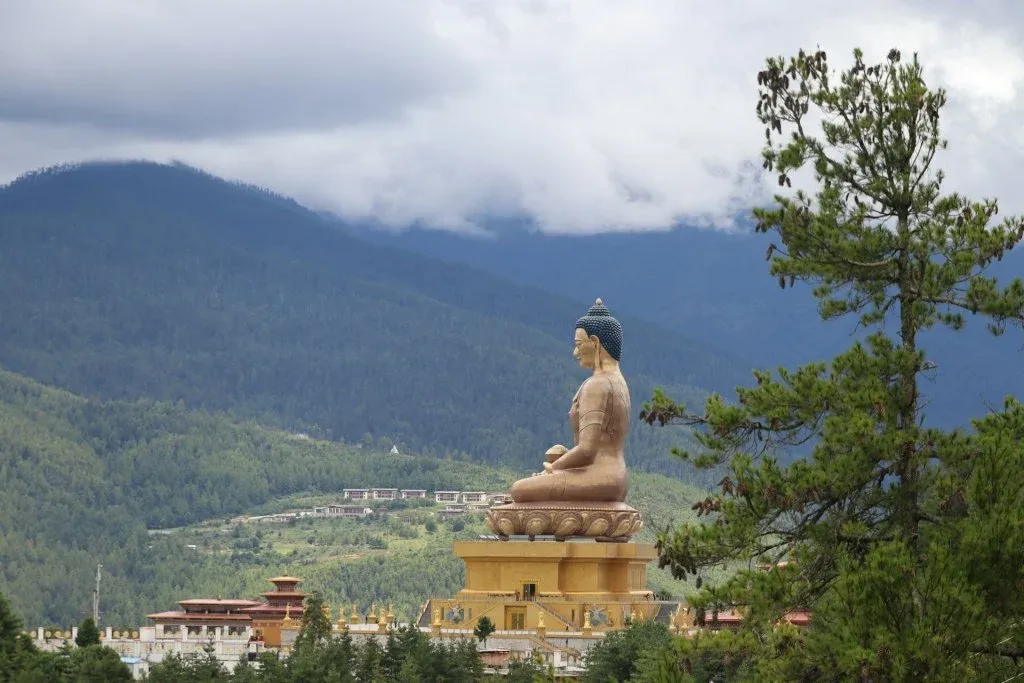
Top Places to Visit in Bhutan
Nestled in the Himalayas, Bhutan captivates travelers with its natural beauty, rich culture, and spiritual heritage. With our South Asia travel guide, you can explore some main places while visiting this enchanting kingdom.
Paro Taktsang
Known as the Tiger’s Nest Monastery, Paro Taktsang is perched on a cliff. It is a mainly sacred and pilgrimage site for Buddhists, offering breathtaking views of the Paro Valley.
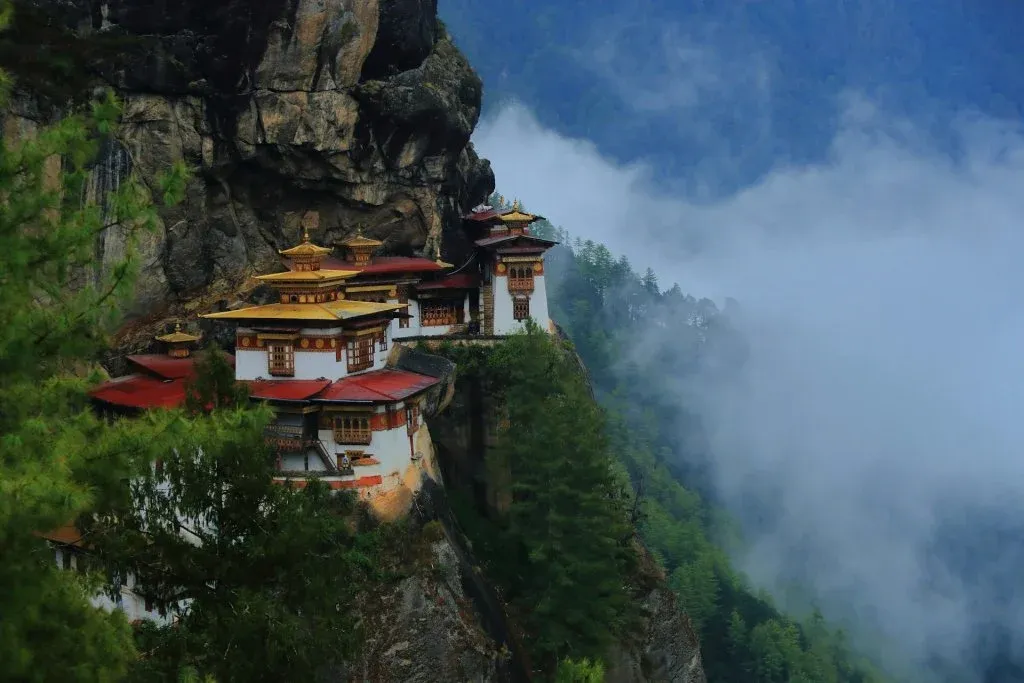
Punakha Dzong
Punakha Dzong, is one of the largest and most spectacular dzongs in Bhutan. It is also known as the Palace of Great Happiness. Located at the confluence of the Pho Chhu and Mo Chhu rivers in the Punakha Valley, it serves as an administrative and religious center. The Punakha Tshechu festival is celebrated here.
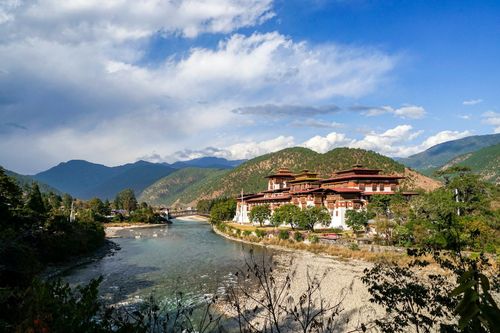
Thimphu
Thimphu, the capital and largest city of Bhutan offers a fascinating blend of ancient and modern architecture. Key attractions include the Tashichho Dzong, an impressive fortress monastery, the gigantic Buddha Dordenma statue overlooking the Thimphu Valley, and the Memorial Chorten. The city also features several museums, galleries, and handicraft markets.
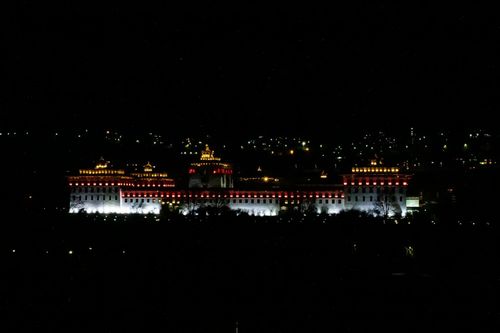
Dochula Pass
Dochula Pass offers some of the most stunning views of the Himalayan range. Located on the road from Thimphu to Punakha, it is a popular travel stop. You can also see the 108 Chortens and Gangkar Puensum, Bhutan’s highest peak.
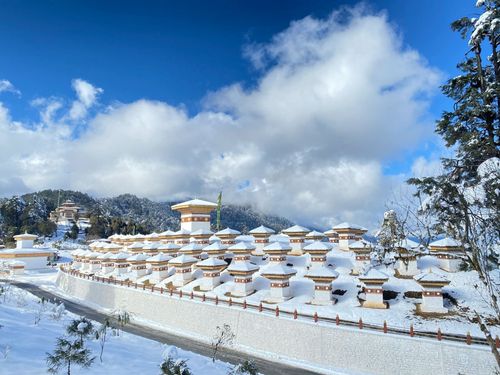
Bumthang Valley
Bumthang Valley, the spiritual heart of Bhutan, features numerous ancient temples and sacred monasteries. The valley includes four sub-valleys: Chokhor, Tang, Ura, and Chhume. Notable sacred sites include the Jambay Lhakhang and the Kurje Lhakhang temple complex. The valley hosts popular festivals such as Jambay Lhakhang Drup and Ura Yakchoe.
Phobjikha Valley
Phobjikha Valley is a serene glacial valley and part of the Phobjikha Nature Reserve and protected area. It is home to the Gangtey Monastery and offers hiking trails with stunning valley views. The valley chiefly hosts local communities maintaining a traditional lifestyle.
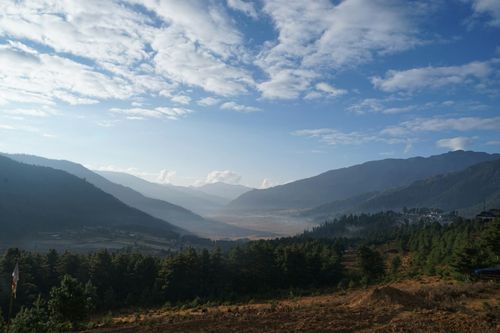
Cultural experiences in Bhutan
In the “Kingdom of the Thunder Dragon,” Bhutan offers a rich tapestry of cultural experiences. Chiefly Bhutanese culture provides a fascinating insight into the soul of this small Himalayan country. Our South Asia travel guide enriches you with iconic cultural experiences.
Embrace Bhutanese Traditions
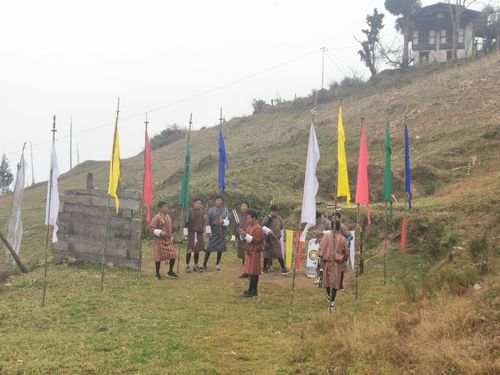
Archery is a deeply rooted tradition reflecting the community and competitive spirit of the Bhutanese people. Also, many hotels and tour operators offer sessions where visitors can learn to shoot a Bhutanese bow and participate in friendly competitions with locals.
Bhutanese Cuisine: Flavors and Traditions
Bhutanese cuisine is unique, with robust flavors and must-try dishes. The national dish, Ema Datshi, is a spicy cheese and chili dish. Also, other popular dishes include momos, Kewa Datshi, Yaksha Shakam, Jum, Gondomaru, Jasha Maru, Phaksha Paa, and Jasha Maru. Bhutanese cuisine often features ingredients like chili, curry, and cheese.
Monasteries and Monastic Life
Monasteries are the spiritual heart of Bhutan, offering a deep insight into the religious life and devotion of the people. Chiefly the iconic Paro Taktsang (Tiger’s Nest) and Punakha Dzong monasteries are among the most impressive in the country. Monks dedicate themselves to meditation, religious studies, and daily rituals. Visiting a monastery may allow you to observe these practices and learn about tantric Buddhism. Participating in a religious festival like the Tshechu provides a profound insight into Bhutanese spirituality.
Bhutan’s Unique Culture
You can also explore Bhutanese culture with our South Asia travel guide. Visiting tourist sites and interacting with locals allows you to gain knowledge about Bhutanese traditions. Chiefly respect their values, and understand their way of life.
Participating in a religious festival like the Tshechu provides a profound insight into Bhutanese spirituality. Respect the Bhutanese dress code and etiquette by dressing modestly, especially when visiting religious sites. Men should wear long pants, and women should wear long skirts or pants. Show respect at sacred sites, ask for permission before taking photos, and follow the instructions of monks or guides.
Practical Travel Tips
Every aspect of Bhutanese culture invites travelers to appreciate life in this extraordinary Himalayan kingdom. With our South Asia travel guide, you will enjoy an extraordinary trip.
Packing for Your Bhutan Adventure
Traveling to Bhutan, the “Kingdom of Happiness,” requires good planning, especially regarding packing. Be sure to bring everything you need. Bring appropriate clothing to adapt to temperature changes, as the weather varies according to the season. So consider wearing traditional clothing such as a “gho” or a “kira,” as you will need to wear them at places and events that require them.
Comfortable footwear is essential; bring hiking shoes and comfortable sandals or shoes for leisure time. Bring your favorite personal hygiene products, and also a small first aid kit with basic medicines, as finding pharmacies in remote areas can be difficult. Photography equipment is a must. Ensure you have the appropriate plug adapter, as Bhutan uses Type D and G plugs.
Transportation and Accommodation in Bhutan
Bhutan’s transportation system helps preserve its culture and environment. You have several safe and responsible ways to explore both cities and rural areas:
- Domestic flights: Fastest for traveling between major cities.
- Private car or bus: Common way to travel within Bhutan.
- Car rental with a driver: Popular choice due to narrow, winding roads.
- Taxis: Available in some cities; agree on fare beforehand since meters are not used.
- Public buses: Limited but affordable.
- Bicycle rental: Ideal for adventure seekers.
- Walking: Best for nature lovers.
Bhutan is a unique tourist destination that has preserved its traditions and culture. With our South Asia travel guide, you’ll have an enriching experience. Accommodation ranges from luxury hotels to traditional family homes, as well as simpler options like guesthouses and hostels for a more authentic local experience.
How to Travel Responsibly in Bhutan
When traveling to Bhutan with our South Asia travel guide, it is important to consider responsible and sustainable travel. Respect Bhutanese norms and traditions during your visit. Follow traffic rules, support local businesses, and be mindful of your impact on the natural and cultural environment. Respect local customs and dress appropriately, especially when visiting sacred places like temples and monasteries. Do not disturb or damage the natural environment, and respect the local flora and fauna. Avoid wasting natural resources and respect the country’s conservation policies.
Stay Connected with Yoho Mobile
To stay connected during your trip to Bhutan, using an eSIM is essential. You can also activate it remotely through the mobile service provider. The eSIM also offers better cybersecurity, as it’s harder to tamper with. Yoho Mobile is the top choice to ensure a smooth and enjoyable experience in the “Himalayan Kingdom.”
| 🎁 Special Discount for Our Readers! | ||
| As a special treat for our readers, Yoho Mobile is offering an exclusive discount! Use our coupon code “YOHOREADERSAVE” to get your first order for FREE! | ||
| Don’t miss out on this opportunity to stay connected affordably while exploring Bhutan. |

